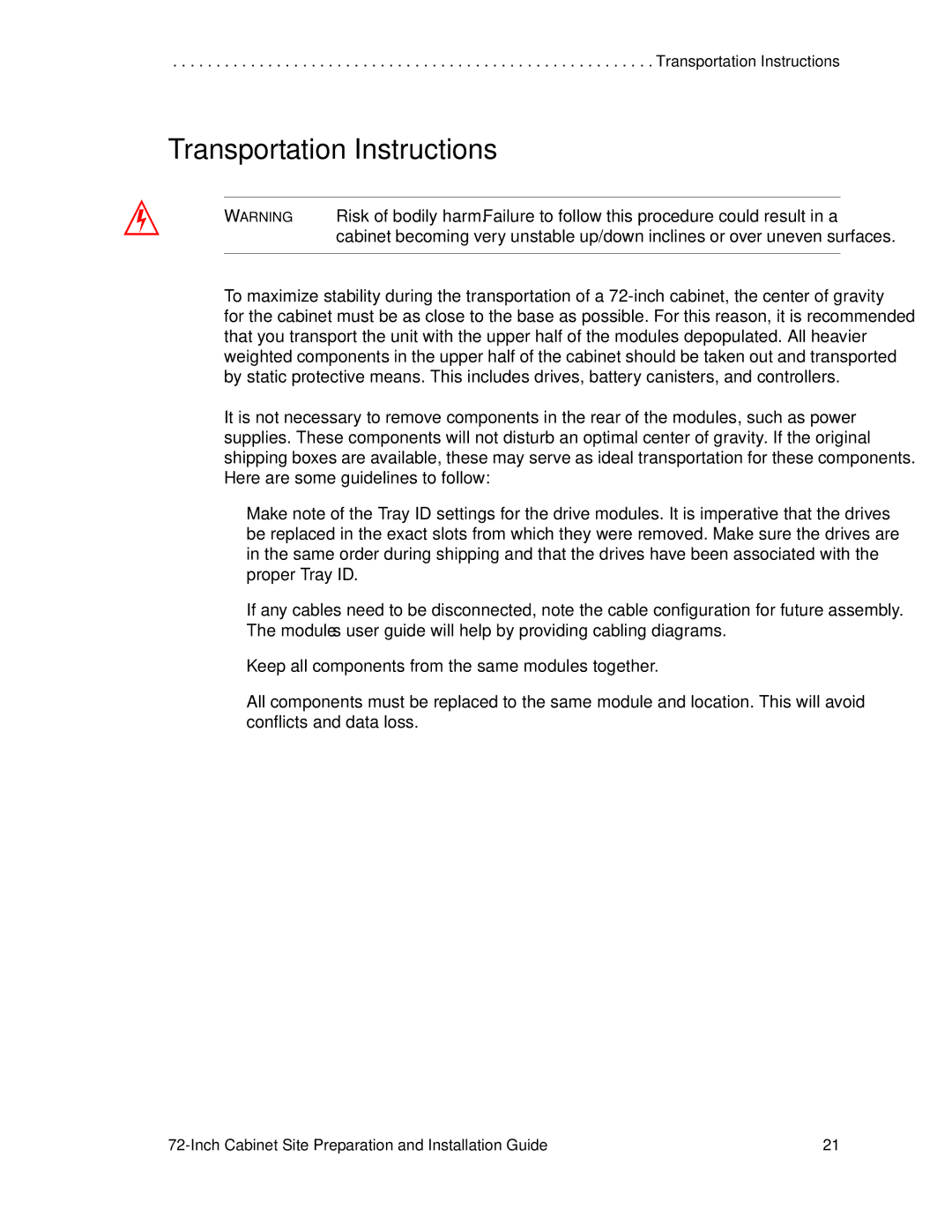. . . . . . . . . . . . . . . . . . . . . . . . . . . . . . . . . . . . . . . . . . . . . . . . . . . . . . . . Transportation Instructions
Transportation Instructions
WARNING Risk of bodily harm. Failure to follow this procedure could result in a cabinet becoming very unstable up/down inclines or over uneven surfaces.
To maximize stability during the transportation of a
It is not necessary to remove components in the rear of the modules, such as power supplies. These components will not disturb an optimal center of gravity. If the original shipping boxes are available, these may serve as ideal transportation for these components. Here are some guidelines to follow:
•Make note of the Tray ID settings for the drive modules. It is imperative that the drives be replaced in the exact slots from which they were removed. Make sure the drives are in the same order during shipping and that the drives have been associated with the proper Tray ID.
•If any cables need to be disconnected, note the cable configuration for future assembly. The module’s user guide will help by providing cabling diagrams.
•Keep all components from the same modules together.
•All components must be replaced to the same module and location. This will avoid conflicts and data loss.
| 21 |
